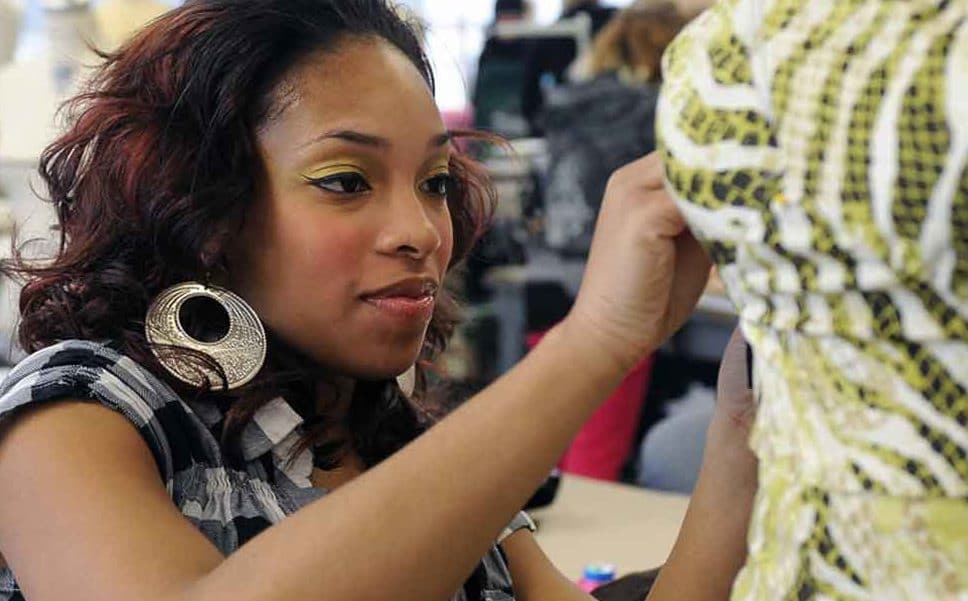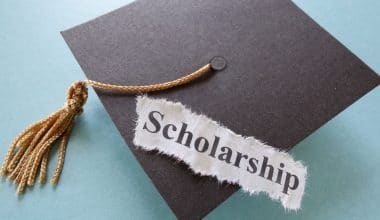The Japanese educational system is one of the most influential agents of Japanese youth. If you want your child to study in Japan, getting the best high school for your child is the best thing to do.
If you lack the information and language skills on the best high schools in Japan for your kids, you’re just in the right place.
Here are the 15 best high schools in Japan that welcome international students and provide them with adequate language and cultural support until graduation.
Table of contents
- What are High Schools Like in Japan?
- Are there Public High Schools in Japan?
- How Many Years is High School in Japan?
- Is High School Free in Japan?
- How Much Do High Schools Cost in Japan?
- 15 Best High Schools in Japan for International Students in 2024
- Private High Schools in Japan for Foreign Students
- #4. International Christian University High School
- #5. Otsuma Tama Junior and Senior High School
- #6. Kanto International Senior High School
- #8. Tokyo Gakuen High School
- Conclusion
- References
- Recommendation
What are High Schools Like in Japan?
Do you want your child to study in Japan, and you’re curious about what high school is like, or have an interest in Japanese culture in high school?
Let’s look at the life of high school students in the Japanese public and private schools.
We grouped these life standards into categories ranging from entering school, life in the classroom, and extracurricular activities, to life after school.
Those that Read this Article, End up Reading: Volunteering Programs For High School Students In 2024
#1. Going to School
A normal school day for a Japanese high school student can start at 6:30 am or 7:00 am if you have to travel a long distance to school by train and/or bus.
Japanese high school students don’t drive to school like their American counterparts. Many students have to walk or bike if their home is just a short distance from the school.
For such students, the school day begins at 8:30 am so students can leave the house at 6:30 am. They’ll have to take a bus or be driven to school by their parents.
However, public transportation also offers the opportunity to socialize with their peers as some students sleep or study during their long commutes.
School policies often require students to board buses and trains, leaving seats open for other passengers to show consideration.
Those that Read this Article, End up Reading: Summer Volunteering Programs For High School Students In 2024
#2. Inside the Classroom
Once they arrive at school, students move to their respective lockers assigned to them to their shoes and other personal stuff.
A typical day at school begins at 8:30 am with administrative tasks, such as taking attendance, posting, and assigning homework in class.
Students will spend most of the day taking different subjects in their classroom. They only move to other parts of the school, such as the gym or the lab, when they have PE and science classes.
Students are expected to remain disciplined and calm during class hours. Still, the atmosphere can become lively during recess or lunchtime when they can socialize with their peers.
At lunchtime, students often spend time eating and chatting with each other in the main classroom, as most high schools in Japan do not have a general cafeteria or dining hall.
In most schools in Japan, students bring a box lunch from home, called bento boxes, which were prepared by their mothers earlier in the morning. In comparison, some schools offer meals to students.
A Japanese lunch box often consists of rice, fish or meat, eggs, vegetables, pickles, and sometimes fruit.
Going down to the dress code for students, you will find out that uniforms differ by school and region.
If you’ve watched Japanese anime or manga, chances are you’re familiar with kawaii Japanese high school uniforms.
Students typically have three types of uniforms: one for summer, one for spring and fall, and one for winter. The students wear a white blouse, skirt, high socks, and, depending on the school, a bow or tie. In winter, they also wear a sweater and vest.
In winter, male students wear dress shirts, long pants, and a vest or coat.
At the end of the academic day, all students participate in o soji, the cleaning of the school. They sweep classrooms and hallways, empty trash cans, clean toilets, clean blackboards and chalk erasers, and pick up trash on school grounds.
After o soji, school ends, and most students disperse to different parts of the school for club meetings.
#3. Extracurricular Activities
In addition to their unwavering commitment to academics, Japanese high school students also devote a large portion of their time to extracurricular activities such as clubs after school hours.
Clubs can range from sports to cultural clubs, and students can only join one club during high school as they rarely change clubs from year to year.
Students are involved in club activities as they must attend meetings and practices every day between 3:30 pm and 6 pm after school, including on weekends and holidays.
Students in their final year of high school generally choose to withdraw from their club activities to focus on preparing for the rigorous college entrance exams.
Those that Read this Article, End up Reading: Scholarships for High School Senior Class of 2024
Are there Public High Schools in Japan?
Japan has several public schools across all states.
Elementary schools, colleges, high schools, colleges of technology, colleges, universities, and colleges in Japan are national, public, or private institutes.
The level of education in private high schools is usually better than in public high schools. Yet, things done in Japanese public high schools set them apart.
In Japanese high schools, children go to school in a group, have healthy lunches prepared by the school, children clean the school themselves (making them responsible at an early age), and so on.
During summer, several activities are organized by most public schools for their students. Also, activities like a marathon (long-distance competition) in winter make the most out of the students.
Some public schools have many volunteers who come to the classroom to interpret in English for children of foreign nationalities.
Japan’s public schools have classes five days a week, Monday through Friday. Some schools have classes on Saturdays. Middle and high schools have six lesson periods per day, typically 50 minutes each.
Above all, most public schools in Japan create platforms for special schools to be available for children with physical/mental disabilities.
See Also: 20 Free Accredited High School Diploma Online, No Cost | 2024
How Many Years is High School in Japan?
The Japanese school system is mainly made up of six-year elementary schools, three-year middle schools, and three-year high schools. Compulsory education lasts for nine years up to elementary and junior high school.
High school typically takes three years in each of the following subjects: math, social studies, Japanese, science, and English.
Other subjects include physical education, music, art, and moral studies. All students at a single level study the same subjects.
Japanese students spend 240 days a year in school, 60 days longer than their American counterparts. Although many days are dedicated to preparing for annual festivals and school events such as Culture Day, Sports Day, and field trips, Japanese students still spend much more time in class than American students.
Is High School Free in Japan?
High school is not compulsory in Japan; even public high schools charge tuition. But compared to many other costs parents pay to educate their children, public high school tuition is almost like a drop in the bucket.
There are no entrance exams or tuition fees in public elementary and high schools, and textbooks are distributed free.
How Much Do High Schools Cost in Japan?
According to the Ministry of Education figures for 2006, the average public high school student paid 112,000 yen per year in school fees, which is certainly high for low-income families.
But at the same time, the average student in a public high school also paid 176,000 yen per year for cram schools or just.
In total, parents pay an average of 520,000 yen per year in education costs for a child if he attends a public high school. This is about half the cost of private high school students, an average cost of 1,045,000 yen per year(including ¥785,000 tuition and ¥260,00 for juku).
On average, parents spend a total of 2.76 million yen per child for six years of elementary school if the child goes to a public institution and 8 million yen if the school is private.
Although there is no tuition fee for public elementary and middle schools, there are many ancillary costs. This includes lunch, usually ¥40,000 per year, and kyoikuhi, or “training fees” for field trips.
Additional materials (textbooks are free) cost about ¥55,000 yen per year for elementary school and ¥130,000 yen for high school.
Generally, a public high school student spends 471,000 yen a year, while a high school student in a private school spends 1,269,000 yen.
But public students spend about 20,000 yen more a year on juku than private students.
Because almost all public high school students have to take high school entrance tests, about half of private university students will enroll in high schools affiliated with their university (and some will even go to university).
Private schools are for-profit businesses, so it is against their interests to discourage students from continuing their entrance studies.
15 Best High Schools in Japan for International Students in 2023
We considered three factors in ranking the best high schools in Japan for foreigners. They include:
Accreditation is one important factor in selecting the best high schools in Japan. We consider an accredited school better than a non-accredited one—also, the type of accreditation matters in this selection.
Programs: The number of programs a school offer is essential. Some high schools are just based on the general curriculum, while some go ahead to hold cram programs and Saturday classes.
Tuition Fees: Public high schools are, of course, much cheaper than private ones. Tuition support is available to low-income families.
Private High Schools in Japan for Foreign Students
#1. KAIS International School
Accreditation: Council of International Schools (CIS)
Tuition: ¥2,700,133
KAIS International School is one of Japan’s most innovative and distinguished international schools.
Conveniently located in central Tokyo, they have served the international community since 2006.
At KAIS, their students learn in small classes in a family setting, where they can develop their connection with others while exploring who they are as people.
With a low teacher/student ratio, students in classes naturally receive individual attention from instructors. This makes students in every class makes their voice heard. And no student, for whatever reason, sneaks out and misses a learning opportunity.
Their program covers all spheres of the high school curriculum, ranging from English, Mathematics, Physical Education, Science, Social Studies, Foreign Language, etc.
International students pay a tuition fee of ¥2,700,133 yearly. This might seem expensive, but the fee you pay to attend a good school is not better than the value you will gain from the school.
However, international students still come to Japan to study there.
#2. Kaisei Academy
Accreditation: Approved
Tuition: ¥1,055,000
The Kaisei Academy is a preparatory boy private secondary school in Arakawa ward, Japan.
The Kaisei Academy consists of a Junior High School (grades 7-9) and a Senior High School (grades 10-12) with approximately 900 and 1200 students, respectively.
Students come from everywhere Tokyo area and the world at large.
Most importantly, the Academy is glad to welcome international students with various talents, interests, and perspectives regardless of race, religion, or ethnicity.
Admission to Kaisei is very competitive, and applicants are selected based on entrance exams.
Historically, almost all Kaisei graduates are admitted to the most prestigious universities in Japan, and between 40% and 50% of them attend the University of Tokyo annually.
#3. Horizon Japan International School
Accreditation: Verified
Tuition: ¥1,800,000 – ¥2,100,000
Horizon Japan International School serves students from preschool through high school and is an IB World School.
HJIS is fully accredited by two of the world’s leading accreditation organizations: the Council of International Schools (CIS) in Europe and the Western Association of Schools and Colleges (WASC) in the United States.
The school’s mission is to develop each student by providing an outstanding international education for success in a caring and courageous environment from early years to university entrance.
Hence, they offer the following programs:
- PYP Early Years
- IB PYP
- IB MYP
- IB DP
- English as an additional language
#4. International Christian University High School
Accreditation: Verified
Tuition: ¥591,000
International Christian University High School is one of Japan’s best private high schools.
It is located on the International Christian University (ICU) campus in the city of Koganei, in western Tokyo.
More than 65% of its students are national students, while the remaining 35% are international students from different races and countries.
All classes are taught in Japanese, except those taught by English speakers.
ICUHS is a designated “Super Global High School” under a government program that aims to encourage leaders capable of playing an active role on the international stage.
Upon admission in April 2019, ICUHS accepted applications from 80 students during the first year, including a small number of international students.
Costs for a school year included, among other things, an entrance fee of ¥330,000 and an annual tuition of ¥591,000.
ICUHS also has great accommodations for both indigenes and international students.
#5. Otsuma Tama Junior and Senior High School
Accreditation: Accredited
Tuition: Contact School
Located in Tama City, Otsuma Tama Junior, and Senior High School is a private secondary school for girls.
This private girls’ school in Tama city, west of Tokyo, makes several places available to international students each year.
Otsuma is a six-year coeducational high school. Therefore, your admission process is done at the seventh-year level.
The different aspects of school life at Otsuma Tama, such as school events, student body, and club activities, help stimulate students to think critically, value fairness and discipline, and change things.
The three years of junior high school focus on developing basic academic skills while learning to cooperate with peers. These are the years in which students develop their interests, and the basic academic and social skills acquired during these years broaden their future possibilities.
The next three years of high school are very preparatory for college, allowing students to get closer to their dreams. With an intimate orientation in school and career, we help our students achieve their goals.
Don’t hesitate to get in touch with the school directly for information on fees and applications.
#6. Kanto International Senior High School
Accreditation: Accredited
Tuition: ¥52,500 (Monthly)
Kanto International School is a private, coeducational high school with three learning pathways: General Education, Foreign Studies, and Performing Arts.
International students are only accepted in the Japanese culture course in the general education stream.
For the 2020 school year, there were openings for 20 students who applied as returnees or international residents out of an annual total of 360 students.
The Department of Education has designated Kanto International as an “English Language Super High School.”
These schools emphasize the study of English and are responsible for developing such programs and conducting practical research to create effective collaborative links with colleges and universities.
Located in Shinjuku, Kanto International had an application fee of ¥25,000, an enrollment fee of ¥240,000, other entrance fees of ¥234,200, and a uniform fee of ¥200,000.
The average annual building/education fee is ¥47,200 (may differ depending on the year and course). Monthly tuition fee ¥52,500 (depending on the year and course).
#7. Waseda University Senior High School
Accreditation: Accredited
Tuition: Contact School
Waseda University High School was established in 1949 on the Waseda University campus, based on the pre-war Waseda University High School.
The school’s goals are to promote independence, citizenship, and a focus on life skills.
High school students are exposed to an extensive yearly schedule of extracurricular activities and study tours. This permits them to develop the academic and personal skills necessary for smooth progress in high school.
Included in their program for high school is a required second language.
Students can choose between German, French, Chinese, or Russian.
After experiencing a wide range of subjects in the first year, students choose between a humanities course or a science course for the last two years of high school.
Also, the school can boast a wide range of extracurricular activities, which make up a large part of student life.
Most students participate in club activities and can choose from about fifty different clubs, including cultural, arts, and sports activities.
Around 1,800 children are currently studying in this free and enjoyable environment, and they are proud that many of our graduates are actively involved and serving in various fields worldwide.
#8. Tokyo Gakuen High School
Accreditation: Verified
Tuition: Contact School
Tokyo Gakuen High School was known as Tokyo Commercial High School between 1939 and 1973.
Due to the changing times of the society built around the school, the name was changed from a commercial high school to a private school with conventional courses.
The Japanese private school is all-boys-only and was birthed in a public-private initiative.
Public High Schools in Japan for Foreign Students
#9. Kokusai Senior High School – Tokyo
Accreditation: International Association for College Admission Counseling (IACAC)
Tuition: ¥118,800
Tokyo Metropolitan Kokusai High School, commonly known as Kokusai Koko, is the largest among all public and international high schools.
Located in Komaba, Meguro Ward, the school welcomed 25 international students upon admission in April 2017 and around five in September.
It describes itself as one of the top 10 Tokyo metropolitan high schools. Of the six designated schools for international students, only this one has a full website in English.
Kokusai (the Japanese word for international) emphasizes developing students’ language skills and an international perspective and offers a wide variety of language courses, including French, German, Spanish, and more.
Students can register twice a year, in April and September. The school also operates the International Baccalaureate Diploma program, which teaches primarily in English.
This course accepts a maximum of 25 Japanese and international students per year. One of the school’s best features is that it supports foreigners with special Japanese lessons and places them in all classes (including math, science, and languages) according to their skill level.
The school is international, with returnees from all over the world and international students.
#10. Tokyo Metropolitan Asuka High School
Accreditation: Western Association of Schools and Colleges
Tuition: 650,000 Yen
Asuka High School is located in Oji, Kita Ward. It describes itself as having a higher number of teachers than other schools, allowing it to organize smaller classes divided according to their ability in English, math, and Japanese.
It offers subjects according to two main learning pathways: international culture and art and life studies.
Asuka High School describes itself as actively seeking international exchanges, partly through a study trip to Australia in her second year.
The school generally accepts 20 foreign residents starting in April and three in September, out of an annual showing of around 130 students.
#11. Fuchu Nishi High School
Accreditation: Western Association of Schools and Colleges
Tuition: Contact School
This school in Fuchu, west of Tokyo, prides itself on its deep teaching.
Organize small classes divided according to students’ abilities and use computer and communication equipment for teaching.
The emphasis is on information technology in its first-year program, and a science and humanities component beginning in the second year.
Fuchu Nishi had 15 places for international students in its April start for the 2024 school year and three in September.
#12. Minamikatsushika Senior High School
Accreditation: Western Association of Schools and Colleges
Tuition: Contact School
Minamikatsushika Senior High School in Tateishi, in the Katsushika district, generally accepts 15 non-Japanese students on its admissions in April and three in September.
They have small classes of 20-30 students in many subjects and distribute math and English lessons according to students’ abilities.
Organize optional extra study classes on Saturdays.
For more information on the school’s enrollment requirements, click below.
#13. Tagara High School
Accreditation: Western Association of Schools and Colleges
Tuition: Contact School
Tagara High School generally admits 20 international students in its April admissions; six in their general training course and 14 in their foreign culture course.
Located in Hikarigaoka, Nerima Ward, Tagara teaches Japanese culture and traditions in third grade.
#14. Takenodai High School
Accreditation: Western Association of Schools and Colleges
Tuition: Contact School
This Japanesse private school is based in Higashi-Nippori, Arakawa district, and generally accepts 15 international students in its general education course in April and three more in September.
It organizes extra voluntary study courses after school, on Saturdays, and during vacation periods and provides a self-study room after school.
Here is more information about the applications.
#15. Keika Gakuen
Accreditation: Western Association of Schools and Colleges
Tuition: Contact School
This institute in Hakusan, in the Bunkyo district, includes a high school for boys and a high school for girls.
At the beginning of the 2020 school year, the boys’ school had ten places open for returnees in each of the lower and upper secondary sections.
The school also offered a small number of inter-semester places in the returnee category, where he noted that nationality was not a problem, thus opening that category to foreign students.
Each school charges an admission fee of 250,000 yen and monthly tuition of around 34,000 yen, among other fees.
FAQs
Yes. Ten schools in Tokyo welcome foreign students and provide them with adequate language and cultural support until graduation.
All International schools in Japan are privately owned, and the costs of attending them vary widely. While public schools are open to English-speaking children, there often needs to be more support for non-Japanese speakers.
Altogether, parents paid on average ¥520,000 a year in education costs for a child if they went to public high school, which is about half the cost for private high school students, who paid on average ¥1,045,000 a year (including ¥785,000 tuition and ¥260,00 for juku).
High school attendance is optional. In 2010, 98 percent of all junior high school graduates entered high school, and about 74 percent of all high schools were public. High school entrance is based on exam performance, and the competition is intense for favored schools.
Conclusion
Many Japanese people recall their high school days as beautiful memories they will remember for the rest of their lives. That is why parents still choose to send their children to Japan to study.
If you’re searching for the best high school in Japan for international students, then the above list is for you.
References
- savvytokyo.com – 10 Japanese High Schools That Accept Foreign Students
- schoolnyk.com – A Day in the Life of a Japanese High School Student





